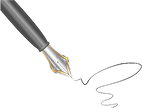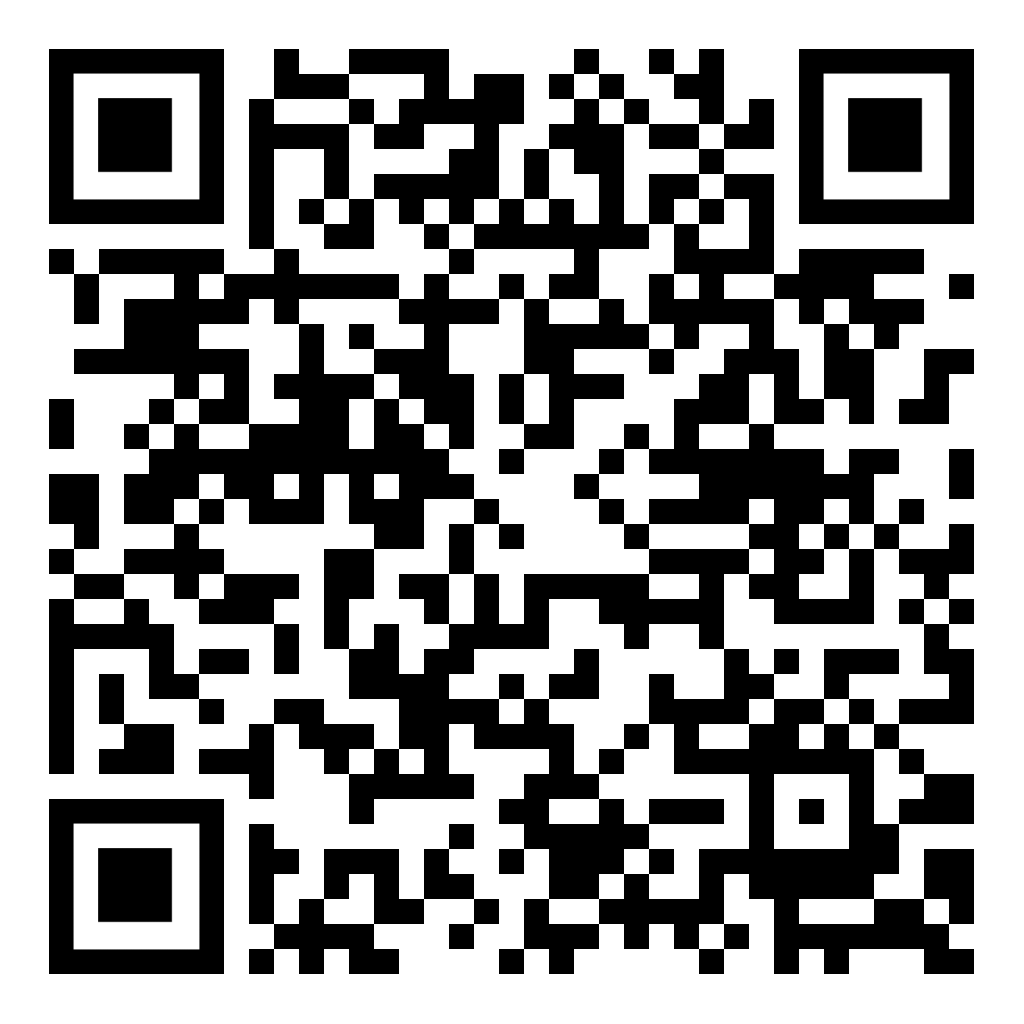TASK 1
QUESTION - 1
A student was given a colourless liquid and was told that it contained NO Nitrogen and reacted with Phosphorous Pentachloride PCl5. Describe what is seen in the PCl5 reaction and describe all the tests and results needed to prove that it is an alcohol and not water or a carboxylic acid.
Answer:
In the reaction, HCl gas is evolved as steamy colourless fumes and detected by a strip of filter paper soaked in strong ammonia solution.
Test-
Following tests are performed for the confirmation of given colourless liquid as alcohol-
- Jones test- The colourless liquid is mixed with Jones reagent (chromic acid in sulphuric acid). Within 15 seconds, a green colour is appeared. This positive test confirms that given liquid is primary or secondary alcohol.
- Lucas test- With Lucas reagent (ZnCl2/HCl), a cloudy emulsion is appeared within 5-10 minutes which confirms that given colourless liquid is alcohol.
QUESTION - 2
(a):You are investigating a crime scene and discover a flask of alcohol which you find has 3 carbon atoms and it reacts with Cr6 ions. Describe this test, the positive result and what it tells us about the rank of alcohol (draw it to find out which rank it CANNOT be)
Answer:
In the test, a green colour is obtained which shows the alcohol is either primary or secondary. Jones reagent (Cr (vi)) oxidises primary and secondary alcohol to aldehyde and ketone respectively and generates green colour. Tertiary alcohol cannot be oxidised due to absence of hydrogen on the OH attached carbon.
(b): The oxidation product of the alcohol discovered in Q-1(a) (not the alcohol) gave a positive Iodoform test result. Describe the test results of the oxidation product with 2,4 DNP Tollens, Fehlings or benedicts.
Answer:
The oxidised product in Q-1 a, is acetone because it gives positive Iodoform test. Only methyl ketones (not other types of ketones) can undergo the iodoform reaction because only methyl ketones have three H atoms on the carbon, which are necessary to form the iodoform product.
- 2, 4-DNP Test- Positive
- Tollens Test- Negative
- Fehlings or Benedicts Test- Negative
(c): Suggest a name for the oxidation product in Q-1(b) and the original alcohol discovered in Q1(a) and product in Q-1(b):
Answer:
Original alcohol in Q10(a)- Isopropanol
Product in Q-10(b)- Acetone
Question - 3
(a): You have a colourless liquid that you know is an alcohol as you have eliminated water and carboxylic acid and any nitrogen compounds. Your friend tells you it is a primary alcohol; describe two tests you could do to find out if they are correct and the expected results they should see
Answer:
- Test one - In the Lucas Test, the primary alcohols don't generate the cloudy emulsion i.e. don't react with Lucas reagent (ZnCl2+HCl).
- Test two - Primary alcohol is also confirmed by Victer Meyer's Test. In this test, the primary alcohol is treated with Victer Meyer's reagent (Conc. HI + I2) and a blood red colour is appeared which confirms that alcohol is primary alcohol.
(b): If they were incorrect; describe the results that would be seen with a tertiary alcohol
Answer:
Test one - In the Lucas Test, the tertiary alcohol generates the cloudy emulsion with Lucas reagent (ZnCl2+HCl) within 2-3 minutes.
Test two - In Victer Meyer's test, when tertiary alcohol is treated with Victer Meyer's reagent (Conc. HI + I2) and a colourless solution is appeared which confirms that alcohol is tertiary alcohol.
QUESTION - 4
(i): An alcohol which gives an immediate positive to the Lucas test was refluxed with conc. sulphuric acid. Name any oxidation products formed.
Answer:
Alkene
(ii): Butan-2-ol was oxidised; suggest the reaction conditions that can be used
Answer:
Conc. Sulphuric acid, 100-140°C
(iii): What would you expect to see if you did the Iodoform test on this oxidation product above
Answer:
Negative result test
(iv): Another student oxidised what they thought was Butan-2-ol and their 4 carbon oxidation product produced CO2 on contact with sodium carbonate solution. An obvious error has occurred in the selection of one of the starting reagents. Suggest a name for the erroneous starting product.
Answer:
Tertiary butyl alcohol
(v): Describe a positive test result for CO2
Answer:
On passing CO2 in the limewater, it reacts with limewater and produces insoluble CaCO3 and the solution turns cloudy.
(vi): The product formed accidently in 20(v) above was distilled and reacted with magnesium metal. Name the salt formed.
Answer:
Magnesium oxide

Stuck with your Assignment?
Hire our PROFESSIONAL ASSIGNMENT WRITERS and Get 100% Original Document on any Topic to Secure A+ Grade
Get Assignment Help
QUESTION - 5
(i): The first oxidation product of propan-2-ol was added to acidified potassium dichromate (vi) solution K2Cr2O7, and placed in a hot water bath. What would you expect to see?
Answer:
Acetone
(ii): What would be the second oxidation product of ethanol?
Answer:
Acetic acid
(iii): What would be the FIRST oxidation product of ethanol?
Answer:
Acetaldehyde
(iv): If this oxidation product was added to Alkaline Potassium dichromate solution what would you expect to see?
Answer:
Acetate ion
(v): Butanal was found to be the first oxidation product of an alcohol. What was the name of the original alcohol?
Answer:
Butan-1-ol
Original name- 1-butyl alcohol
(vi): Butanal was tested to see if it would be oxidised by acidified potassium dichromate (vi) solution K2Cr2O7. In a hot water bath what would you expect to see?
Answer:
Butanoic acid
(vii): Describe a test and positive result for hydrogen bromide gas.
Answer:
Test for Hydrogen bromide-
One drop of silver nitrate is dropped on the end of a glass rod wet with HBr, a creamy colour ppt is obtained.
(vii): Describe a positive test for 1-chloroethane to distinguish it from 1-iodoethane.
Answer:
Both 1-chloroethane and 1-iodoethane can be distinguished by Lassaigne's test (sodium fusion test). In this test, nitric acid and silver nitrate are mixed with sodium fusion extract. When a white ppt. soluble in NH4OH is formed, then chloro group is present i.e. 1-chloroethane and when a yellow ppt. insoluble in NH4OH is formed, then iodo group is present i.e. 1-iodoethane.
(viii): Suggest and describe a test that would identify the halogen in Iodobenzene and Bromopropane and state the positive results for both.
Answer:
Halogens of Iodobenzene and bromopropane both compounds can be identified by Lassaigne's test. In this test, when pale yellow ppt comes,then compound is bromopropane and when yellow ppt comes, then compound is iodobenzene.
QUESTION - 6
A colourless liquid reacts with PCl5 and is not water or carboxylic acid and there are two possible types of compound that it could be. Describe two tests and positive results to suggest it is a primary amine.
Answer:
Test 1 Hinsberg Test
On adding this amine to the Hinsberg test solution, it gives a clear solution which on acidification with HCl forms a precipitate. This test shows that primary amine is present.
Test 2 Ninhydrin test
Primary amine gives blue or blue-violet color with ninhydrin.
QUESTION - 7
Describe a series of tests that can be done on a nitrogen containing compound to prove that it is a secondary amine and not another amine or amide.
Answer:
Simon's test- In this test, secondary amines give blue-green coloration and this method distinguishes from the primary, tertiary amines and amides.
Hinsberg test- In this test, the precipitate appears from the base does not react with acid. This is the positive test for the secondary amines.
QUESTION - 8
(a)
H H O
│ │ //
H ─ C ─C─ C
│ │ \
H H Cl
The molecule above was added to Butan-1-ol. Describe the reaction seen and suggest two tests to identify both the products formed which could be amines/amides, esters, HCl, acids, alcohols
Answer:
Reaction seen-- n-Butyl propionate ester is formed and HCl gas is evolved.
Test 1 - With Hydroiodic Acid Test, ester gives orange colour within 10 minutes on heating. Test is positive.
Test 2 - Test for Hydrogen Chloride-
One drop of silver nitrate is dropped on the end of a glass rod wet with HCl, a white colour ppt is obtained.
Name the LIQUID product formed : Name....n-Butyl propionate
(b) When an acyl chloride is added to an alcohol, esters are formed. When acid anhydrides are added to alcohol; name the products formed along with small amounts of Hydrogen chloride gas.
Answer:
Esters are a formed
(c) i:-A primary nitrogen containing compound which reacts with PCl5 however; with Sodium hydroxide does not turn moist red litmus blue, was added to Ethanoyl chloride in a fume cupboard.
Answer:
Ammonia
(c) ii: What would you see happen.
Answer:
Amide and ester bonds are formed.
(c) iii: Name all the types of compounds that would be formed
Answer:
Amide, ester and HCl.
(d): What type of compounds are formed when Amides are added to Bromine and then strong Sodium hydroxide in the Hoffman degradation reaction.
Answer:
Amines
QUESTION - 9
1) Optical isomerism
(a) Give a definition for the term optical isomerism.
Answer:
Optical isomerism is the stereoisomerism in which the isomers are identical in molecular weight and most chemical and physical properties but different in their effect on the rotation of polarised light.
(ii) Explain why 2- aminopropanoic acid exhibits optical isomerism
Answer:
Because 2-aminopropionic acid has a chiral centre
iii) Please name the following isomeric compounds as fully as possible
But-1-ene-1,4-dioic Acid
But-2-yne
Pent-2-ene
cyclooctene
Describe a chemical test and positive result used to identify ALL the above compounds.
Answer:
All these compounds, on shaking with bromine water turns red bromine water to clear solution (unsaturation test).
TASK 3: PHYSICAL PROPERTIES AND REACTIONS OF ORGANIC MOLECULES (P7)
1 a) name a tertiary alcohol with six carbon atoms
2-Methyl-2-hexanol
(i) What would be seen if the lucas test was performed on your molecule?
Answer:
Negative due to insolubility in water
(ii) What would be seen if tollen's test was performed on your molecule?
Answer:
Negative test
(iii) What would be seen if the acid dichromate test was performed on your molecule?
Answer:
Negative test
(iv) What would be seen if the2-4 DNP test was performed on your molecule?
Answer:
Negative test
(v) What would you expect to see if you performed an iodoform test on your molecule?
Answer:
Negative test
1 b) Name a secondary alcohol with six carbon atoms?
2-hexanol
(i) What would be seen if the lucas test was performed on your molecule?
Answer:
Lucas test is Positive because 2-hexanol is water soluble.
(ii) What would be seen if tollen's test was performed on your molecule?
Answer:
Negative test
(iii) What would be seen if the acid dichromate test was performed on your molecule?
Answer:
Positive test
(iv) What would be seen if the2-4 DNP test was performed on your molecule?
Answer:
Negative test
(v) What would you expect to see if you performed an iodoform test on your molecule?
Answer:
Positive test
1 c) Name a primary triol with six carbon atoms
3-(hydroxymethyl)pentane-1,5-diol
(i) What would be seen if the lucas test was performed on your molecule?
Answer:
Positive test
(ii) What would be seen if tollen's test was performed on your molecule?
Answer:
Negative test
(iii) What would be seen if the acid dichromate test was performed on your molecule?
Answer:
Positive test
(iv) What would be seen if the2-4 DNP test was performed on your molecule?
Answer:
Negative test
(v) What would you expect to see if you performed an iodoform test on your molecule?
Answer:
Negative test
1 d) Explain why alcohols are soluble in water, you can use a diagram to aid your explanation
Answer:
Alcohols form the hydrogen binding with water as shown in the diagram. This is the reason that alcohols are soluble in the water.
2 a): A student had a chemical that was positive with 2,4 DNP. Draw the functional group this detects.
Answer:
Carbonyl group (aldehyde or ketone)
2 b): The chemical was positive with Tollen's and negative with iodoform and contains 4 carbon atoms. Please draw it.
Answer:
2 c):The student had another chemical which turned purple phenolphthalein colourless. She was told that it was made using an acid that is oxidised from propanal, then reacted with ethanol. As you are so kind you will draw the molecule for her.
Answer:
2 d)Please name this molecule
Answer:
Butanal
3a) Ethyl dimethyl amine was tested with universal indicator.
(i) What colour change would you expect to see?
Answer:
Light blue color
(ii) Is the solution acidic?
Answer:
No
3 b) Ethylamine was tested with universal indicator.
(i) What difference would you see if you compared the result with that of Ethyl dimethyl amine?
Answer:
Deep blue colour appears with ethyl amine.
3 c) A student mixed propanoyl chloride with Ammonia solution. What did they see happen?
Answer:
Amide is formed
Draw the solid product formed.
Answer:
Propanamide
3 d) A student mixed Propanoyl chloride with Ethanamine, in a fume cupboard with full protective clothing. What did they see happen?
Answer:
Amide bond is formed.
Hydrogen chloride gas was formed and an unknown liquid product.
Name the liquid product.
Answer:
N-Ethylpropionamide
3 e)This molecule is 2, Propanamine. Take a very careful look at its structure and decide its rank.
Answer:
Primary amine
What would you see happen if this molecule was added to PCl5?
Answer:
No reaction
What would you SEE happen if this molecule was added to cold HNO2?
Answer:
It forms is opropanol
What would you SEE happen if this molecule was added to ethanol?
Answer:
No reaction
3 f)What would you SEE happen if this molecule was added to Benzene sulphonyl chloride?
Answer:
Sulphonamide is formed.
4) A student was given a sample of both these fatty acid molecules above. Please describe a test that could be performed and the results that would isolate molecule A from molecule B.
Answer:
Bromine water is used to test for unsaturation of fatty acids because unsaturated hydrocarbons (fatty acids) change the red colour to colourless solution.
5) Please look at the two organic molecules below
Phosphodiester bond between
nucleotides in DNA Triglyceride molecule
What is the family of bond type that is common to both molecules that builds up the polymers in both of these biological molecules?
Answer:
Ester bond
TASK 4: PREDICTING THE PRODUCTS OF ORGANIC REACTIONS
1) For the following reactions predict and NAME the main PRODUCTS formed. Take care with (c) as it is not as simple as you may think.
(a) Propanoic acid and Methanol in acidic conditions.
Answer:
Methyl propionate
(b) Acidified Potassium dichromate refluxed with pentan-3-ol
Answer:
Propanal
(c) Propanamide with dilute Sodium hydroxide and pure Bromine, Br2 at room temperature and in the fume cupboard.
Answer:
Ethylamine
(d) Ethanoic anhydride with water
Answer:
Acetic acid
TASK 5: THE IMPORTANCE OF UNDERSTANDING THE REACTIONS OF SIMPLE ORGANIC MOLECULES TO UNDERSTANDING LIVING SYSTEMS (D4)
This is a distinction level question and needs to be well written in a logical manner. Submit your written answer through Plagiarism and include a reference list to accompany your written answer.
(i)Justify the importance of studying simple organic molecules in the study of more complex biological molecules using at least three different biological molecules (two of which need to have two or more functional groups) to argue your case.
Answer:
Metabolism, which involves all the constructive and destructive functions that takes place in the body comprises numerous organic molecules which are required for proper functioning of the body. Some of the important molecules are:
- Glucose: Molecular formula is C6H12O6. It contains hydroxyl groups and aldehyde group. It is necessary for the energy production pathways like the glycolysis. It metabolizes to provides ATPs. It is a carbohydrate which is meant for providing energy to the living being.
- Phenyl Alanin: Molecular formula is C6 H5 CH2 CH (NH2) COOH. It is one of the ten essential amino acids. It contains amino group and the carboxylic group. There is a genetic disorder in which the patients are not able to metabolize the phenylalanine amino acids, this is called phenylketonuria. The urine of such patients turns black when it is exposed to the environment. So it is a very essential component for the body.
- Cholesterol: Molecular formula C27H46O. It is found in the body, performs vital functions like it act as the precursor of sex hormones. It is basically a waxy steroid contains hydroxyl group. Excess of cholesterol in the body causes hypertension.
From the above discussion we can conclude that the organic molecules play an important role in the metabolic activities which takes place inside our bodies. They contain various functional groups, which are actually responsible for the activity. Thus, to understand the functioning of the body the study of organic molecule is must as the metabolism depends on these organic molecules. Whether it is carbohydrate, amino acids, fatty acids or lipids, all are essential for the proper functioning of the body. The deficiency or improper metabolism of any of them can cause disturbance in the metabolism leading to various diseases like the phenylketonuria.

Get an Extra 5% OFF On Your Order in Our App

Scan the QR code with your mobile to unlock an exclusive offer!
Download App Now Scan me
Scan meTASK 6 ELECTRONEGATIVITY AND INTER AND INTRA MOLECULAR BONDING
Need to add
(a)Why do you get Dipole-dipole, dispersion and hydrogen bonding?
(b)What is it about electronegativity that decides which force is present?
(c) Electronegativity will affect intermolecular bonding; analyse how its effect, big or non-existent, can be seen in all 3 types of intermolecular bonding.
Answer:
There are mainly 3 types of intermolecular forces that keep a molecule together. These forces are dipole-dipole interaction, dispersion and hydrogen bonding. The dipole-dipole interactions are electrostatic interactions of permanent dipoles in molecules and tend to align the molecules to increase the attraction. Hydrogen bonding is the attraction between the lone pair of an electronegative atom and a hydrogen atom that is bonded to either nitrogen, oxygen, or fluorine. The hydrogen bonding is often described as a strong electrostatic dipole-dipole interaction.
Electronegativity is a property of atom to attract the electron towards itself. Hydrogen bonding is decided by electronegativity. The existence of different phases like liquid, solid and gas indicate the presence of atomic and intermolecular forces. In the case of water molecule where one oxygen is bound to two hydrogen atoms, the O-H bond is relatively polar due to greater electronegativity of oxygen atom compared to hydrogen atom.
Therefore the positive part of dipole on hydrogen can interact with the negative part of dipole on a neighbouring water molecule resulting in a dipole-dipole interaction. This leads to the formation of hydrogen bonding. However, hydrogen bonds are much weaker than covalent bonds. The freezing or boiling of water does not affect the intra-molecular O-H bonding. However, the intermolecular forces are disrupted.
The melting and boiling points are also affected with these inter and intramolecular forces. In the O-H, S-H and Se-H bonds, O-H is the most polar among these three and hence has the highest boiling and freezing points.



 Company
Company

















